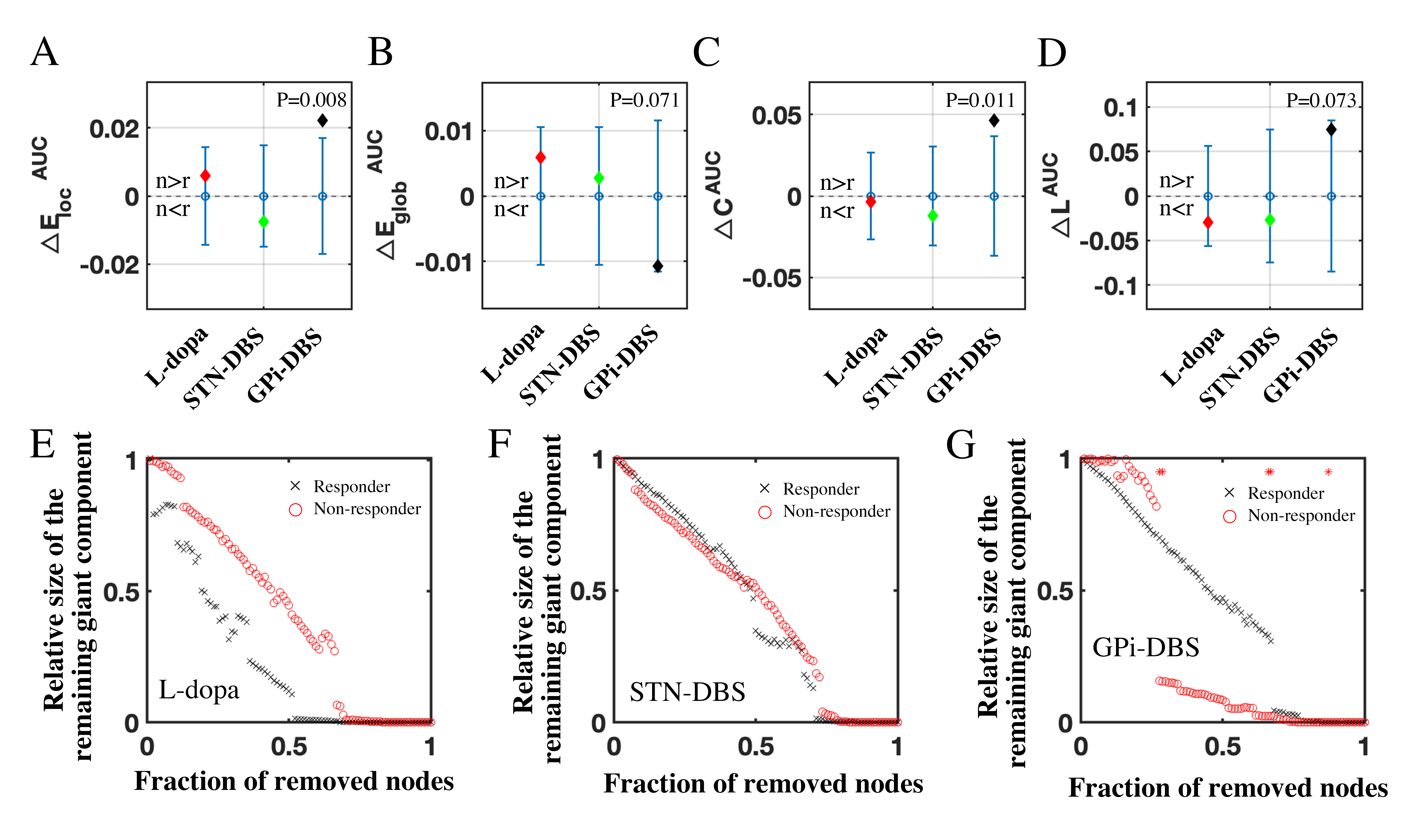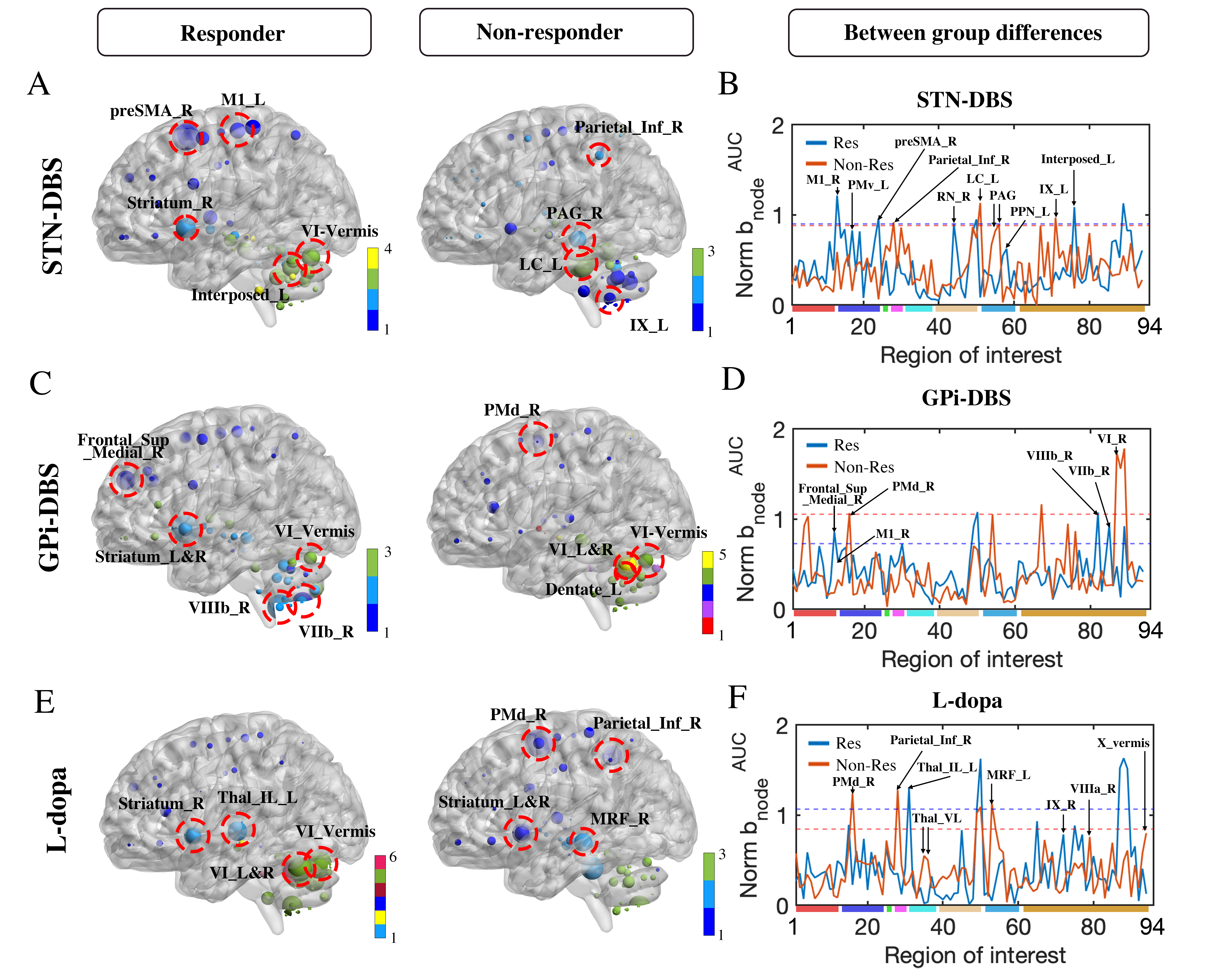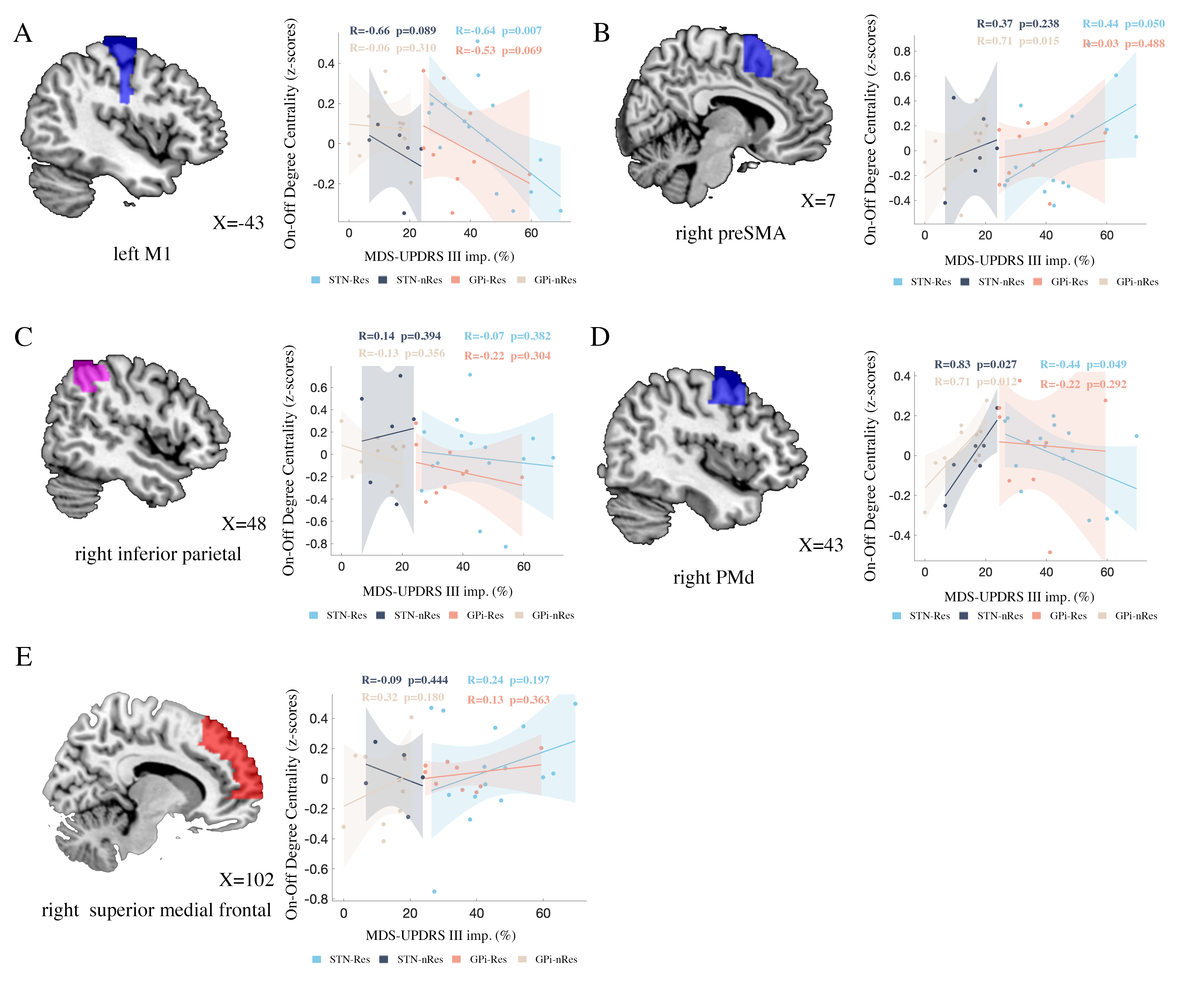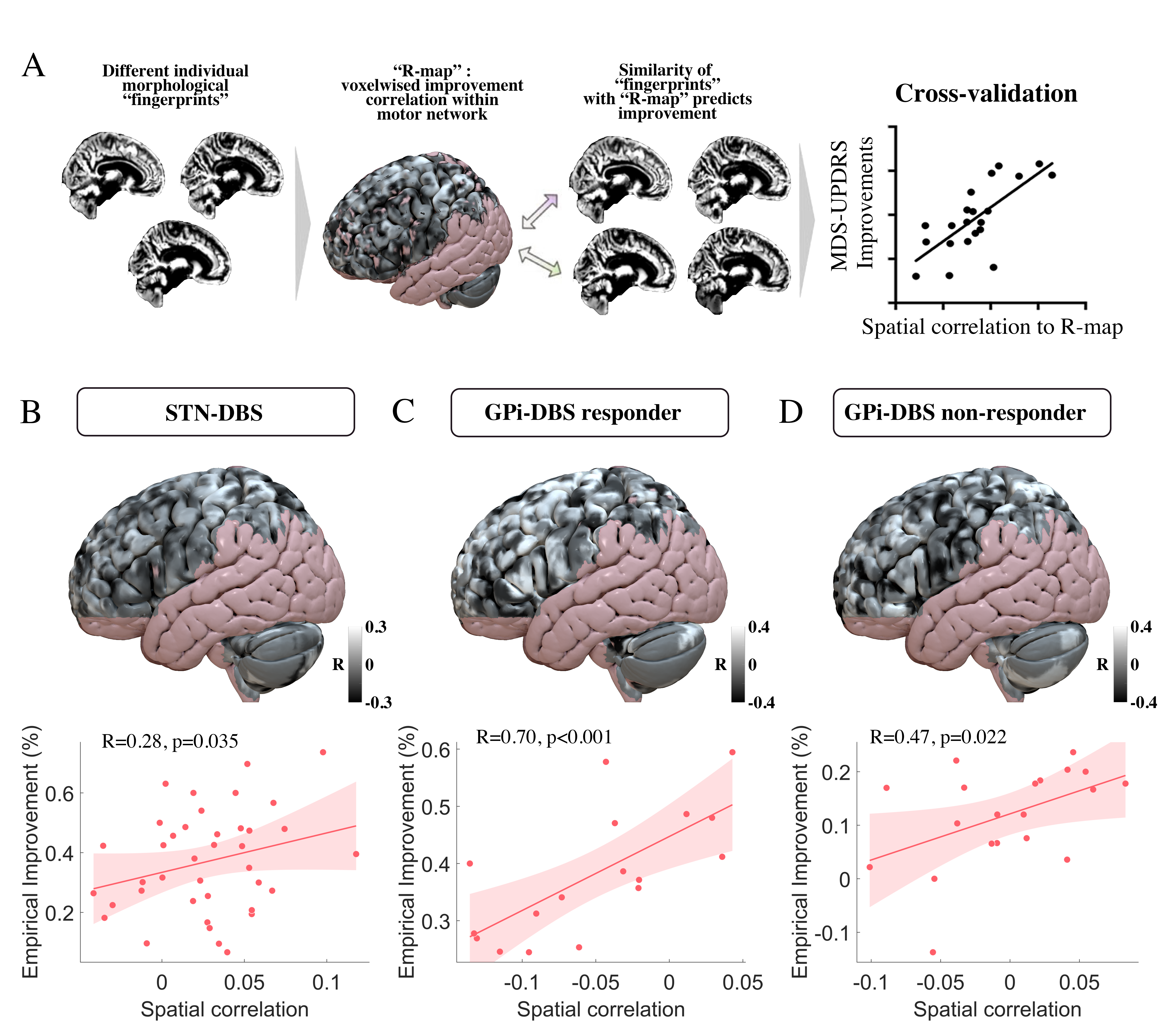Category: Surgical Therapy: Parkinson's Disease
Objective: In this study, we identified differential network characteristics based on graph theory of structural covariance network (SCN) between responders and non-responders of DBS.
Background: Though advanced neuroimaging techniques have been applied in investigating brain networks related to of deep brain stimulation (DBS) in Parkinson’s disease (PD), the association between DBS efficacy and grey matter organization remains poorly understood.
Method: This study included PD patients who received DBS in the subthalamic nucleus (STN-DBS, n=39) and the globus pallidus internus (GPi-DBS, n=37). MR images from 106 PD patients with pre-surgical levodopa challenge test were also analyzed. Grey-matter-based structural covariance networks (SCNs) were constructed to investigate network integration, segregation and robustness. Differential functional alterations in SCN hubs induced by DBS were analyzed using postsurgical fMRI. Morphological maps were constructed to predict outcome based on individual grey-matter fingerprints.
Results: STN-DBS non-responders showed significantly decreased nodal betweenness in right pre-supplementary motor area (p=0.047) and left locus coeruleus (p<0.001), while GPi-DBS non-responders displayed increased local efficiency (p=0.008) and clustering (p=0.011) globally (Fig. 1). Altered network hub patterns were found between different response groups (Fig. 2). Functional connectivity alterations induced by DBS at the SCN hubs, including primary motor cortex, pre-supplementary motor area and dorsal lateral premotor cortex significantly correlated with improvement (Fig.3). Using a voxel-based brain map model, the outcome of DBS could be predicted at a promising level (Fig. 4, R = 0.28, p=0.035 in STN-DBS; R=0.70, p<0.001 in GPi-DBS responders and R=0.47, p=0.022 in GPi-DBS non-responders).
Conclusion: The current study identified responsive grey matter fingerprints beneath both the STN-and GPi- DBS, and demonstrated the feasibility of using individual structural information based on grey matter data for predicting stimulation outcome. We found differential patterns of network hubs in different response groups. Functional alterations induced by DBS in SCN structural network hubs, including M1, preSMA and PMd were related to motor improvement. Morphology evaluation has the potential to be a supplementary tool for predicting DBS responsiveness and for helping stratify patients into clinical trials.
Fig. 1. Network measures.
Fig. 2. Network hubs.
Fig. 3. Correlation analysis of fMRI findings.
Fig. 4. Responsive morphometric fingerprints
To cite this abstract in AMA style:
Y. Lai, Y. Pan, N. He, P. Huang, F. Wang, C. Ying, M. Hnazaee, C. Cao, V. Voon, B. Sun, F. Yan, D. Li. Responsive morphometric fingerprints in deep brain stimulation for Parkinson’s disease [abstract]. Mov Disord. 2024; 39 (suppl 1). https://www.mdsabstracts.org/abstract/responsive-morphometric-fingerprints-in-deep-brain-stimulation-for-parkinsons-disease/. Accessed December 19, 2025.« Back to 2024 International Congress
MDS Abstracts - https://www.mdsabstracts.org/abstract/responsive-morphometric-fingerprints-in-deep-brain-stimulation-for-parkinsons-disease/




